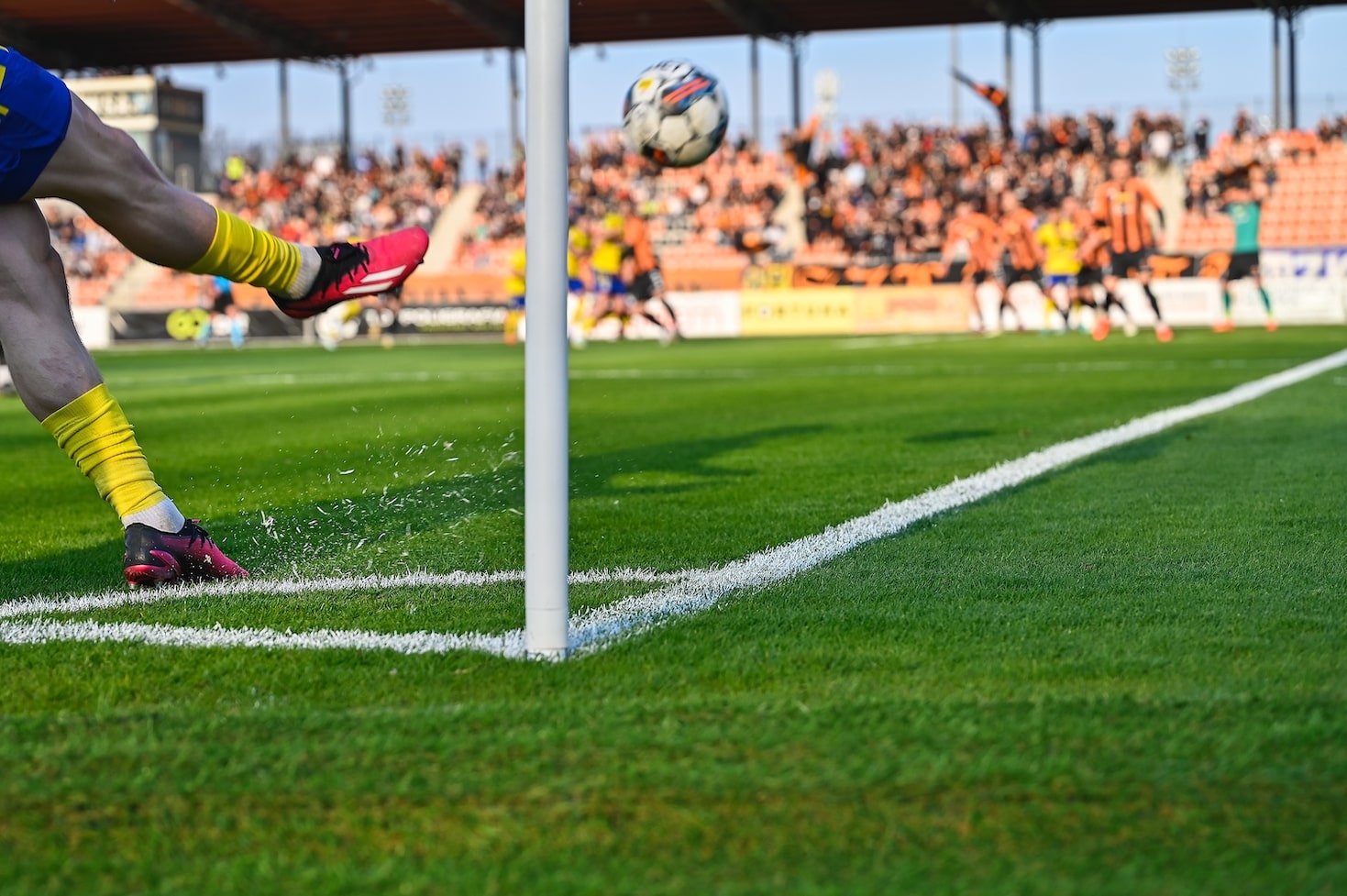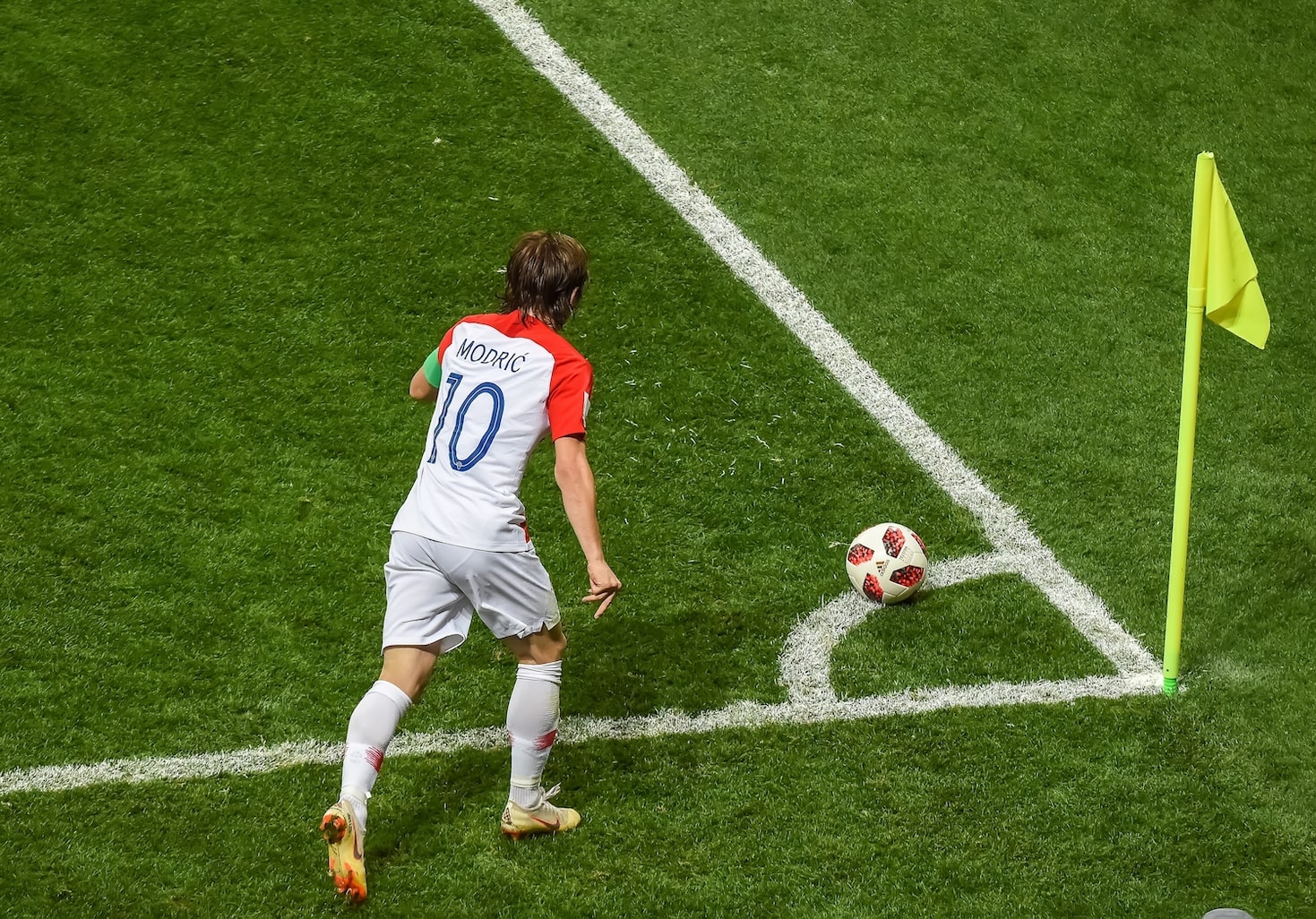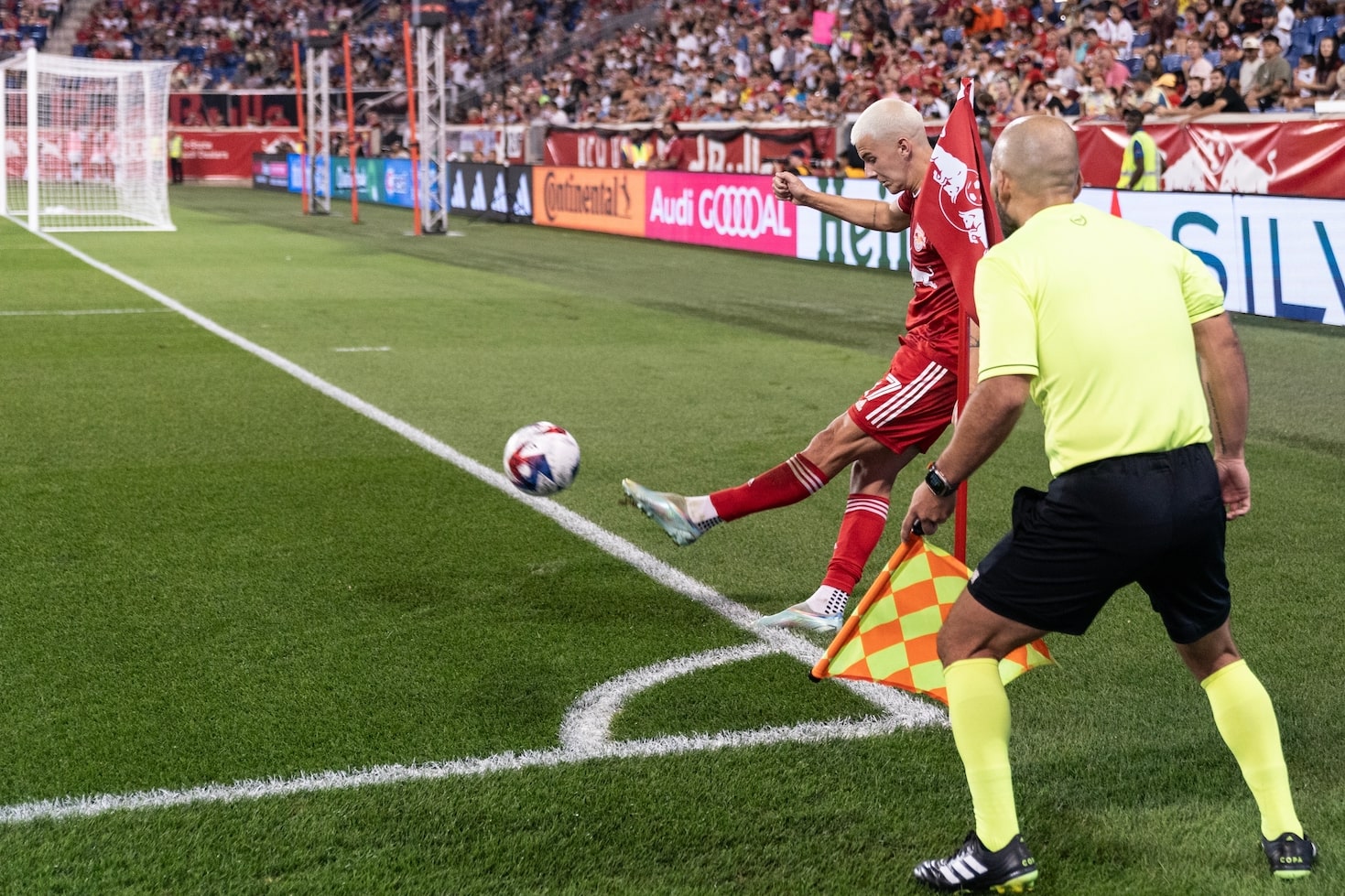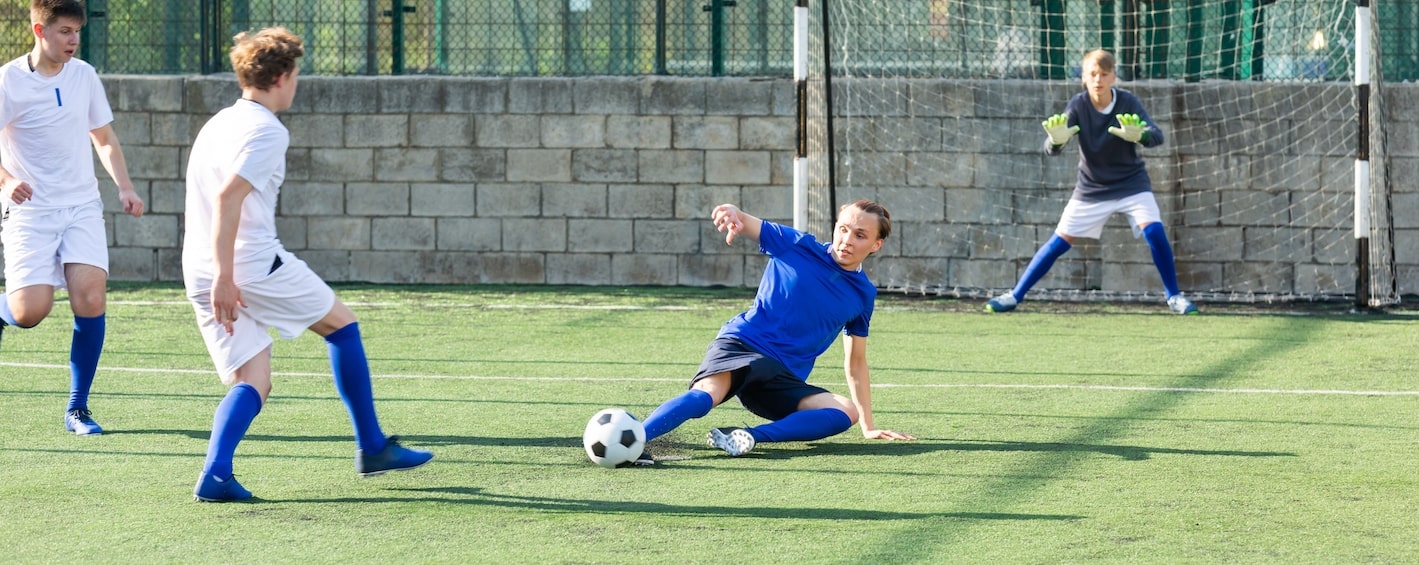The Basics of Corner Kicks
Surprisingly, corner kicks are a goldmine opportunity in soccer, capable of altering game dynamics in the blink of an eye. These carefully planned set plays can swiftly transform defense into offense, presenting a team with multiple opportunities to score.
Corner kicks in soccer are a goldmine opportunity, effectively transforming defence into offense, providing teams with scoring opportunities and a competitive edge on the field.
It is essential not to underestimate the power of corner kicks when it comes to scoring goals. They are not just an afterthought! Understanding their importance can significantly enhance a team's success rate and provide a competitive edge on the field.

Understanding the Purpose of Corner Kicks
Corner kicks hold the potential to be a game-changing event, often heralding a shift in momentum and challenging the impregnable defences. It's not an exaggeration to coin them as 'strategic powerhouses' in soccer dynamics.
Imagine, finding yourself in a tense match where options seem thin. Suddenly, fortune graces you with a corner kick opportunity; a chance to snatch an unprecedented victory. This precise unpredictability can turn the tide, shaking your opponent's complacency.
Moreover, corner kicks can be a surprise bonanza, with a well-planned strike often leaving the opposition stunned. Maximise their potential, leverage them as your secret weapon, and watch the course of the game reshape in your favour!
Setting Up for the Perfect Corner Kick
Perfect corner kicks are a potent weapon in a soccer team's arsenal, opening a plethora of scoring opportunities. With precise execution and the right setup, the humble corner can transform into the game-changer.
Setting up for a corner kick is paramount for success. Understanding player positions, timing, and the dynamics of the swinging ball, can help win the tactical game with ease and panache.
A carefully orchestrated corner kick routine can outfox any defense. With the right placement and delivery, even a well-organized defense can be disarrayed and scoring goals becomes second nature.
Mastering Technique: Striking the Ball
Emphasis on impeccable technique is pivotal when it comes to striking the ball just right for a corner kick. It's not just about power, but a confluence of precision, timing, and optimal foot-ball contact comes into play.
How, then, to attain this finesse? Frequent practice can be uncannily effective. Engage in drills that mirror match situations to build an intuitive understanding of the ball's trajectory and speed.
Remember - the goal of corner kicks isn't to dazzle with brute strength but deliver an accurate, readable ball to a teammate in a threatening position. Practice exactness over strength for successful corner kicks.
Target Practice: Aiming for Success
Fine tuning precision is key, and aiming for the goal post is an award-winning tactic. Precisely placed balls create opportunities for exciting goals and confound the defense, turning the tables in favor of your team.
A drill a day keeps misses away, this isn’t just a catchy phrase but practical advice for any footballer. Performing target specific exercises, such as hitting the crossbar from different angles, helps to improve accuracy, enhancing your corner kick prowess.

Soccer Drills to Improve Corner Kicks
For spicing up practice sessions, introducing specific corner kick drills can be instrumental. These exercises embed skills like precision, timing, and teamwork, turning a potential pressure-point into a tactical weapon.
Venturing beyond running and dribbling drills, let's introduce three specific exercises: The Dummy Run, The Near Post Flick, and The Back Post Header. Each focusing on different aspects – timing, accuracy, and jumping ability, – they lay the foundation for a well-rounded corner kick strategy.
Drill 1: The Dummy Run
The 'Dummy Run' is designed to bring a touch of unpredictability to corner kick situations. By learning to master this drill, you can enhance your skillset and add an advanced level of strategy that keeps the opposition guessing.
- Stage 1: Arrange a group of players at varying distances from the goal. The 'dummy' will start the run towards goal, only to veer off at the last second.
- Stage 2: As the 'dummy' veers off, another player makes a darting run into the space created, ready to connect with the corner kick.
- Stage 3: The player taking the corner kick targets the gap created by the 'dummy', allowing the secondary runner to attack the ball.
- Stage 4: Practice timing and coordination, ensuring the deception fits within the flow of the game. If executed correctly, your opposition won't know where the ball is heading until it's too late.
Drill 2: The Near Post Flick
Specializing in the near post flick means mastering the art of short-range corner kick execution. Characterized by its abrupt halt and quick redirection towards the goal - this drill amplifies precision and timing in your corner kick repertoire.

- Inching towards perfection: Start by setting a target at the near post. Your aim is to flick the ball towards this target with a swift touch of your shoe.
- Next, have a teammate stand as a Defender. Practice outwitting the Defender with a clever footwork before performing the flick.
- Now, add more defenders. The goal is to nail the timing and accuracy of the flick amidst hindrances.
- Finally, integrate this drill in a live scrimmage. Experience real match situations and grasp the unpredictable nature of an actual game. Assess your performance and refine your technique with each attempt.
Drill 3: The Back Post Header
The Back Post Header is an essential drill designed for corner kicks that exploits the far post, setting up players to make successful headers. Just like heading a ball is an art form, implementing this drill perfectly will bring about the chorus of soccer cleats thudding in joyous celebration.
- Practice cross deliveries towards the far corners of the goal post.
- Position attackers away from the defensive wall, standing tall at the far post area.
- Timing and rhythm are key: players should start their runs as the ball is about to be kicked.
- Encourage a forward diving motion while making the header to ensure the ball dips under the bar.
- Replicate real-match scenarios by adding a defender in the mix, simulating pressure conditions.
- Rotate players, so everyone gets a chance to try the back post header.
Tactical Strategies for Corner Kicks
The tactical landscape of corner kicks invites innovation and strategic prowess, where a sharp mind can engineer a swift path to victory. It's not just about brute force; it's a chessboard, and every move holds high stakes.
A corner kick need not always end in a bang—sometimes, a whisper is enough. Playing smart with corner kicks can turn them into potent scoring avenues, making every corner an opportunity. Effective strategies, coupled with improvisation, can bring down the mightiest of defensive walls.
Don't just take a corner—make a statement. Observing patterns, exploiting weaknesses, and introducing unpredictable elements in your execution pave the way for a strategic triumph on the pitch.
Tactical acumen trumps talent in the battle of corner kicks. The beauty of it lies in creating a dilemma in the opponent's mind—whether to anticipate a cross, a short one or a variation. Knowing how to leverage these possibilities brings us one step closer to mastering the game.

Exploiting Weaknesses in the Opponent's Defense
Manipulat the opponent's defense? Let's talk about the ‘corner kick disguise drill’. This drill encourages the attacking team to twist and baffle – making the opponent guess where the ball is heading. When carried out effectively, this keeps everyone on their toes and opens possibilities for a surprise attack!
Next, we explore strategies for exploiting gaps during corner kick execution. The game is in the details – identifying and capitalizing on the opponent’s weak points. Watch like a hawk for those tiny spaces, then strike! With practice, every corner can be turned into an opportunity for a goal!
Creating Confusion: The Short Corner
When it comes to corner kicks, unpredictability is key. Mastering the short corner builds a formidable arsenal, with its deceptive simplicity keeping opponents on their toes.
Drills that focus on quick passes and unpredictable player movement foster an on-field labyrinth. These dizzying patterns can leave opponents in a state of confusion, opening up space for that perfect shot.
The Element of Surprise: Variations in Execution
Keeping the defenders on their toes is a real game-changer in corner kicks and that's precisely where the variations come in. From a short pass to the nearby teammate to a long-distance kick soaring straight towards the goalpost, diversifying corner kick strategies add an element of intrigue and unpredictability to the game.
Corner kicks are not just about scoring, they're a masterclass in teamwork and tactics. Ingraining unique drill practices that prepare the team for unexpected moves such as quick turnarounds, long-range volleys, and skillful maneuvers can open up a world of opportunities, turning the corner kick into an exhilarating game within the game.


Improve Your GameJust 1.99 p/m
Exclusive drills and sessions, get involved today!
- 100’s of Drills
- Coach to Camera Videos
- Sessions from Pro’s
- Industry Leading Advice



Cupello
Rethinking soccer coaching via our industry leading tools. Built to offer effective coaching development solutions for players and coaches of all levels.